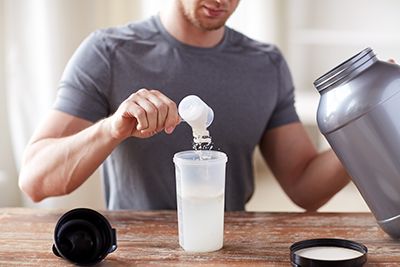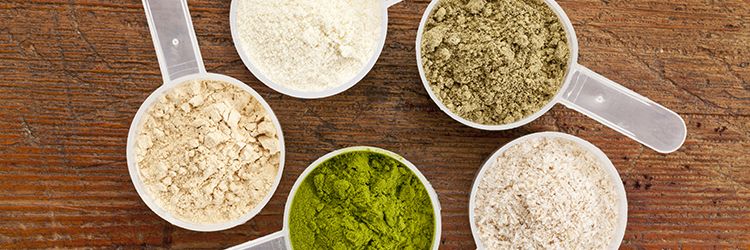Most protein powders on the market today contain whey, soy, or casein. But what else? Consumers who look to protein powder as a nutritional supplement may be surprised to learn that, although they are ingested, protein powders are unregulated in the United States. The Food and Drug Administration (FDA) provides guidelines for food products and additives, but there is no mandate for protein powder producers to follow these guidelines. A good overview of limits for food additives and substances for FDA regulations can be found here:
www.fda.gov/food/ingredientspackaginglabeling/foodadditivesingredients/
Hidden hazards?
Protein powders may contain unlisted ingredients. Plants can absorb heavy metals from the soil, which can then be passed along in the protein powder. Testing protein powder with the Vanta™ handheld XRF analyzerWe took the opportunity to test four protein powders using the Vanta handheld X-ray fluorescence (XRF) analyzer. For this experiment, we used a Vanta VMW model in GeoChem mode. The portable Vanta analyzer can perform accurate element analysis of protein powders in just a few seconds. |  |
Results
For the protein powders we tested, there were no indications of lead (Pb) or cadmium (Cd) content. However, we did see elevated levels of bromine (Br), a known carcinogen (a substance capable of causing cancer). It’s possible that the bromine came from a pesticide that was on plant matter used to make the protein powder, or it could even be from an additive called potassium bromate. The use of potassium bromate in products that consumers ingest is banned in the EU, Canada, and several other countries. While the FDA does place limits on the acceptable amount of bromine in food products, the US is one of the few countries that doesn’t ban outright the use of bromine-based additives.
| Heavy metals in various protein supplements | Results in PPM. Errors shown are 1-sigma, except for non-detects ("ND") which show 3-sigma errors | |||||||||||
| Sample | Chromium | +/- | Bromine | +/- | Arsenic | +/- | Cadmium | +/- | Lead | +/- | Mercury | +/- |
| Sample 1 | ND | 6 | 4.6 | 1 | ND | 3 | ND | 4 | ND | 3 | ND | 3 |
| Sample 2 | 17 | 2 | ND | 3 | ND | 3 | ND | 3 | ND | 3 | ND | 3 |
| Sample 3 | ND | 6 | 13.8 | 1 | ND | 3 | ND | 3 | ND | 3 | ND | 3 |
| Sample 4 | ND | 6 | 15.4 | 1 | ND | 3 | ND | 3 | ND | 3 | ND | 3 |
Ensuring what you eat is safe
Consumer safety is paramount, especially when dealing with the foods and supplements people eat. The Vanta XRF analyzer can effectively screen for several hazardous substances, offering important information for consumers, regulators, and manufacturers of food products. The Clean Label Project did a study of protein powder and found similar results: www.cleanlabelproject.org/protein-powder/. With all this data in hand, “watch what you eat” takes on new significance, as you can make much more informed decisions about what is healthy and safe for you to eat.
Sources
www.consumerreports.org/cro/2012/04/protein-drinks/index.htm
www.cnn.com/2017/12/06/health/protein-powder-pros-cons/index.html
www.cleanlabelproject.org/protein-powder/
Related content
Does this glass pass? Using XRF to screen for ceramic and lead contaminants
XRD technology is helping users who have a flare for fireworks safety
Using the Vanta handheld XRF analyzer to assess contaminated land
Get In Touch

